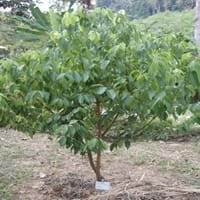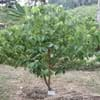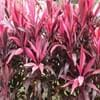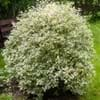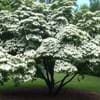Life Span
Perennial
Perennial
Origin
Southern Asia, India
North America, United States, Northeastern United States, Mid-Atlantic United States, Southeastern United States, North-Central United States, Central United States, South-Central United States, Canada
Types
Pani Kurundu, Pani Kurundu
Autumn Flame, October Brilliance, Tiliford
Number of Varieties
Not Available
Habitat
Farms, Open Forest, Riverbanks, Rocky areas, Tropical rainforest, Tropical regions
Forests, Wide range of ecological site
USDA Hardiness Zone
10-15
3-9
Sunset Zone
H1, H2, 23, 24
A2, A3, 1a, 1b, 2a, 2b, 3a, 3b, 4, 5, 6, 7, 8, 9, 14, 15, 16, 17
Habit
Oval or Rounded
Oval or Rounded
Flower Color
White, Light Yellow
Red
Flower Color Modifier
Bicolor
Bicolor
Fruit Color
Purple, Black
Red, Green, Brown
Leaf Color in Spring
Light Green, Dark Green, Pink
Light Green
Leaf Color in Summer
Dark Green
Green, Dark Green
Leaf Color in Fall
Dark Green
Yellow, Red, Orange, Yellow green, Gold, Dark Red, Orange Red
Leaf Color in Winter
Dark Green
Not Available
Leaf Shape
Small elliptic
Maple shaped
Plant Season
Spring, Summer, Fall, Winter
Spring, Summer, Fall
Sunlight
Full Sun, Partial Sun, Partial shade
Full Sun, Partial Sun
Type of Soil
Sand
Clay, Loam, Sand
The pH of Soil
Acidic, Neutral
Acidic, Neutral, Alkaline
Soil Drainage
Average
Average
Bloom Time
Late Spring, Early Summer, Summer, Late Summer, Early Fall, Fall
Early Spring, Spring
Tolerances
Shade areas
Wet Site, Soil Compaction
Where to Plant?
Ground
Ground
How to Plant?
Divison, Seedlings, Stem Planting
Seedlings, Vegetative Reproduction
Plant Maintenance
Medium
Medium
Watering Requirements
Average Water Needs, Needs watering once a week
Water Deeply, Water when top layer of soil becomes dry
In Summer
Lots of watering
Lots of watering
In Spring
Moderate
Moderate
In Winter
Average Water
Average Water
Soil pH
Acidic, Neutral
Acidic, Neutral, Alkaline
Soil Type
Sand
Clay, Loam, Sand
Soil Drainage Capacity
Average
Average
Sun Exposure
Full Sun, Partial Sun, Partial shade
Full Sun, Partial Sun
Pruning
Remove damaged leaves, Remove dead branches, Remove dead leaves
Remove dead branches, Remove dead leaves
Fertilizers
fertilize in growing season, Water soluble fertilizers
General garden fertilizer, No need to fertilize every year
Pests and Diseases
fungus, Insects, Leaf spot, Mites, Red blotch
Anthracnose, Bleeding canker, Decline, Fomes root rot, Ganoderma root rot, Laetiporus root rot, Leaf spot, Powdery mildew, Tar spot, Verticillium Wilt
Plant Tolerance
Drought
Soil Compaction, Wet Site
Flowers
Insignificant
Insignificant
Flower Petal Number
Single
Single
Fragrant Bark/Stem
Yes
No
Foliage Texture
Medium
Medium
Foliage Sheen
Glossy
Matte
Attracts
Birds
Not Available
Allergy
Avoid during Pregnancy, drowsiness, Vomiting
breathing problems, Eczema, flushing of face, Hives, Low blood pressure, Oral cavity, Rapid Heartbeat, Runny nose, Watery eyes
Aesthetic Uses
Not Used For Aesthetic Purpose
Showy Purposes
Beauty Benefits
Good for skin and hair, Improve hair condition, Improve skin condition, Making cosmetics, Skin Problems
Not Available
Environmental Uses
Air purification, Food for insects
Air purification, Wildlife
Medicinal Uses
Cold, constipation, Diabetes, Diarrhea, Menstrual Disorders, Upset stomach
Not Available
Part of Plant Used
Bark, Seeds, Whole plant
Whole plant
Other Uses
Air freshner, Condiment, Employed in herbal medicine, For making oil, Making Perfumes, Oil is used in perfume, soaps, creams, etc., Used As Food, Used as primary flavor in Italian Liqours, Used for its medicinal properties, Used as a spice
Edible syrup, Used as Ornamental plant
Used As Indoor Plant
Sometimes
Yes
Used As Outdoor Plant
Yes
Yes
Garden Design
Edible, Feature Plant, Shade Trees, Tropical
Feature Plant, Shade Trees, Street Trees
Botanical Name
CINNAMOMUM verum
ACER rubrum
Common Name
Cinnamon, Cinnamon Bark Tree
Northern Red Maple, Red Maple
In Hindi
दालचीनी
लाल मेपल के पेड़
In German
Zimt
Red Maple Tree
In French
Cannelle
Red Maple Tree
In Spanish
Canela
Árbol de arce rojo
In Greek
Κανέλα
Red Maple Tree
In Portuguese
Canela
Árvore de bordo vermelho
In Polish
Cynamon
Red Maple Tree
In Latin
cinnamomum
Rubrum Maple ligno
Phylum
Magnoliophyta
Magnoliophyta
Class
Magnoliopsida
Magnoliopsida
Order
Laurales
Sapindales
Family
Lauraceae
Aceraceae
Clade
Angiosperms
Angiosperms, Eudicots, Rosids
Tribe
Not Available
Not Available
Subfamily
Cassythoideae
Not Available
Number of Species
Not Available
Not Available
Season and Care of Cinnamon and Red Maple Tree
Season and care of Cinnamon and Red Maple Tree is important to know. While considering everything about Cinnamon and Red Maple Tree Care, growing season is an essential factor. Cinnamon season is Spring, Summer, Fall and Winter and Red Maple Tree season is Spring, Summer, Fall and Winter. The type of soil for Cinnamon is Sand and for Red Maple Tree is Clay, Loam, Sand while the PH of soil for Cinnamon is Acidic, Neutral and for Red Maple Tree is Acidic, Neutral, Alkaline.
Cinnamon and Red Maple Tree Physical Information
Cinnamon and Red Maple Tree physical information is very important for comparison. Cinnamon height is 760.00 cm and width 910.00 cm whereas Red Maple Tree height is 1,220.00 cm and width 1,220.00 cm. The color specification of Cinnamon and Red Maple Tree are as follows:
Cinnamon flower color: White and Light Yellow
Cinnamon leaf color: Light Green, Dark Green and Pink
Red Maple Tree flower color: Red
- Red Maple Tree leaf color: Light Green
Care of Cinnamon and Red Maple Tree
Care of Cinnamon and Red Maple Tree include pruning, fertilizers, watering etc. Cinnamon pruning is done Remove damaged leaves, Remove dead branches and Remove dead leaves and Red Maple Tree pruning is done Remove dead branches and Remove dead leaves. In summer Cinnamon needs Lots of watering and in winter, it needs Average Water. Whereas, in summer Red Maple Tree needs Lots of watering and in winter, it needs Average Water.
